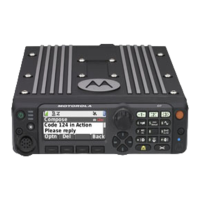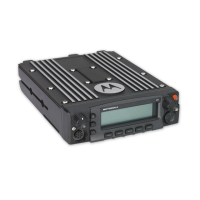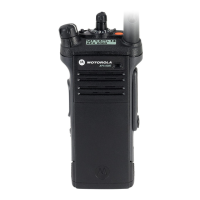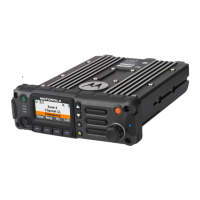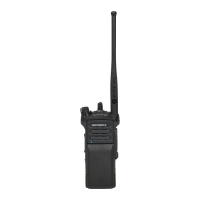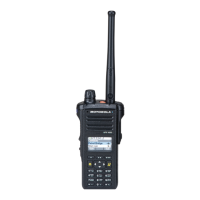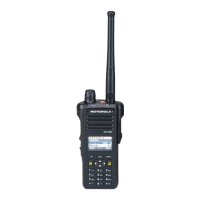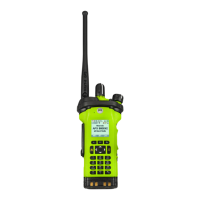Theory of Operation: Global Positioning System (GPS) 3-71
3.3 Global Positioning System (GPS)
The GPS architecture employs a single chip GPS receiver (U2206) which decodes GPS signals at
1575.42 MHz. It is capable of producing a final position solution including full tracking and data
decode capability. The GPS receiver will operate in the autonomous mode only.
The GPS signals are received by the main RF/GPS combination antenna. The GPS signal is
diplexed at the antenna port via a series resonant network, C1309 and L1305,which provides a very
low capacitive load to the transceiver. The signal is routed though a GPS LNA, U1304, (and a SAW
filter, FL1301 for VHF/700–800 MHz (rev. E kit and above) , UHF1/700–800 MHz, UHF1/VHF, UHF1/
UHF2, UHF2/700–800 MHz, and UHF2/VHF radios), and its output is applied to the RF-Controller
interface connectors (P101 to J1001) where it is eventually routed to the expansion board via the
J4001 and P2001 connectors for processing by the GPS IC. Additional GPS diplexing components
include C1150, L1114, C1122, and L1103 which provide proper termination at the Peregrine switch,
U1102, output to minimize GPS signal leakage at the antenna port tap point at C1301.
NOTE: The enable signal for this LNA is generated by the GPS IC and DC coupled onto the GPS RF
signal which goes through the RF-Vocon-Expansion Interconnect.
When the GPS signals reach the expansion board, they go through an unbalanced SAW filter
(FL2205), low noise amplifier (U2217), and a balanced SAW filter (for MHLN6977 Expender Board)
and unbalanced SAW filter (for MHLN7035 Expender Board), FL2207, which then connects to the
GPS IC’s RF inputs (U2206 pins A5 and B5 for MHLN6977 and pins L2 for MHLN7035). Once the
GPS locks on to 3 – 4 satellites, it can then compute a position fix. The radios main processor can
communicate with the GPS IC (U2206) via UART2.
The GPS receiver is setup in an autonomous one track always (OTA) mode, also known as
continuous navigation. This means the GPS will continuously track satellites for as long as the radio
is powered to ensure the best possible accuracy. In the event the radio loses visibility of the satellites
due to terrain or environmental factors such as driving through a tunnel or entering a building, the
GPS will temporarily lose its position fix. A power savings algorithm will then cycle the GPS in and
out of a sleep mode at approximately 90 second intervals until the radio has moved back into an
environment where GPS signals are present.
The user will be able to view the current latitude, longitude, and time/date stamp on the radio’s front
display (Dual-Display Version Only). The radio can also be configured to send its’ location to the
system at predetermined intervals (LRRP). Depending on system options, the user may be able to
enable/disable the GPS receiver.
3.3.1 Power
• The GPS RF and IO supplies are powered by a 1.8V LDO (U2270)
• The GPS Core supply is powered by a 1.2V LDO (U2284)
• The LNA (U2217) and TCXO (Y2204) are powered by a 2.8V LDO (U2220)
• The LNA (U1304) is powered by a 3.0V LDO (U201)
3.3.2 Clocks
• The 32kHz RTC input (U2206 pin D1 for MHLN6977 and pin H6 for MHLN7035) originates from
CPLD IO74 (U6101 pin E2)
• The 26MHz reference clock input (U2206 pin D4 for MHLN6977 and pin H6 for MHLN7035)
originates from a discrete TCXO (Y2204)
3.3.3 I/O
• The GPS reset (U2206 pin C1 for MHLN6977 and pin D5 for MHLN7035) originates from CPLD
IO91 (U6101 pin D12)
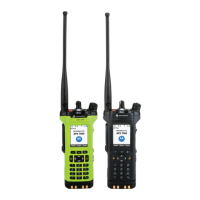
